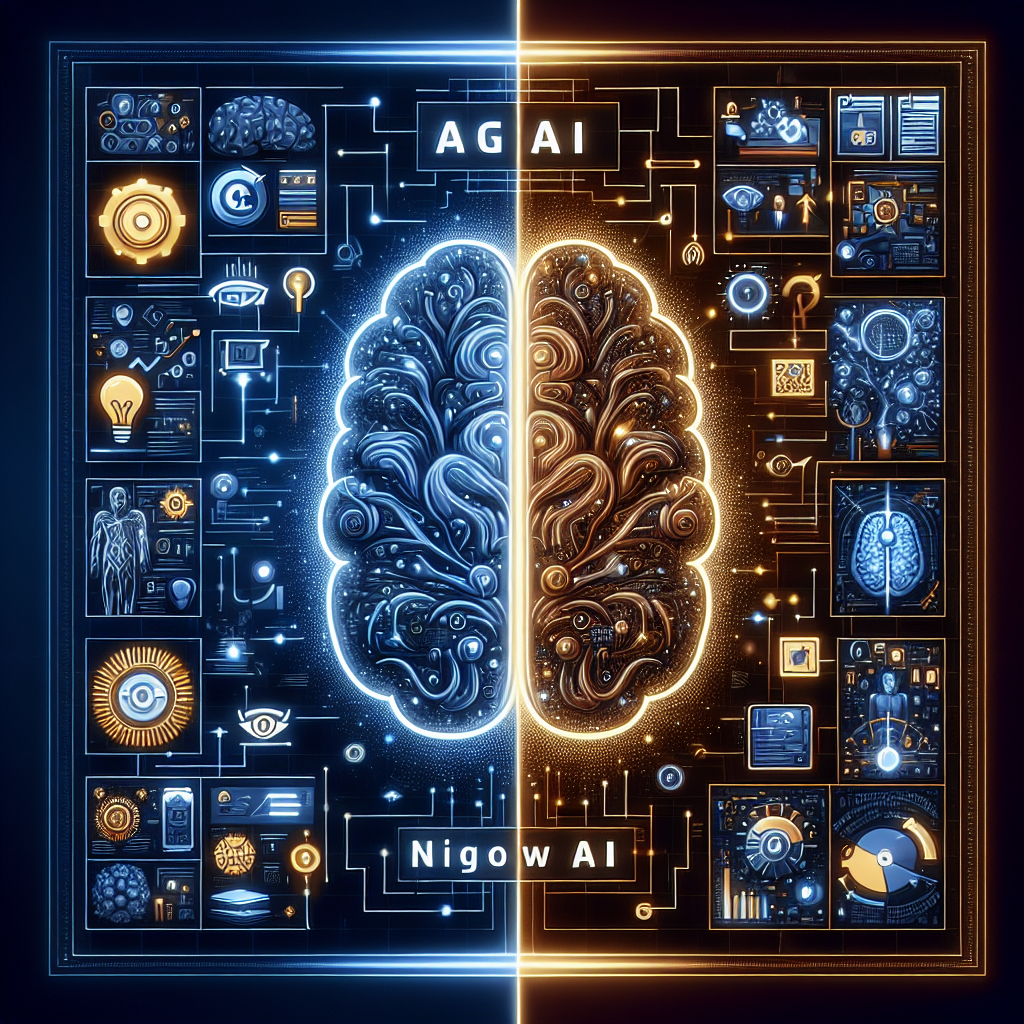Artificial Intelligence (AI) has become a ubiquitous term in today’s technological landscape, with applications ranging from smart assistants like Siri and Alexa to autonomous vehicles and advanced medical diagnosis systems. However, within the realm of AI, there are two distinct categories that often get confused: Artificial General Intelligence (AGI) and Narrow AI. Understanding the difference between these two types of AI is crucial for grasping the potential and limitations of artificial intelligence technologies.
Artificial General Intelligence (AGI) refers to a type of AI that possesses human-like cognitive abilities, allowing it to understand and learn any intellectual task that a human being can. AGI is often associated with the concept of “strong AI,” where the AI system can perform any intellectual task that a human can, including reasoning, problem-solving, and creativity. AGI is the ultimate goal of many AI researchers, as it represents the pinnacle of artificial intelligence capabilities.
On the other hand, Narrow AI, also known as Weak AI, refers to AI systems that are designed for specific tasks or domains. Narrow AI systems are highly specialized and excel at performing a limited set of tasks, such as image recognition, natural language processing, or playing games like chess or Go. While Narrow AI has made significant advancements in recent years and is widely used in various industries, it is fundamentally different from AGI in terms of its capabilities and scope.
One of the key distinctions between AGI and Narrow AI is their level of adaptability and generalization. AGI is designed to be flexible and adaptable, capable of learning new tasks and domains with minimal supervision. In contrast, Narrow AI is designed for specific tasks and lacks the ability to generalize its knowledge to new situations. This means that while a Narrow AI system may excel at one task, it would struggle to perform a different task outside its designated domain.
Another important difference between AGI and Narrow AI is their level of autonomy and consciousness. AGI is often associated with the idea of artificial consciousness, where the AI system has self-awareness and can make decisions based on its own internal motivations and goals. In contrast, Narrow AI systems are not conscious and operate within predefined parameters set by their human designers. While Narrow AI systems can appear intelligent and make decisions, they do not possess true consciousness or self-awareness.
In terms of development and implementation, AGI is still largely a theoretical concept, with researchers working to bridge the gap between Narrow AI systems and true general intelligence. The challenges of developing AGI are immense, as it requires advancements in areas such as cognitive science, neuroscience, and machine learning. In contrast, Narrow AI systems are already widely deployed in various industries, driving innovations in fields such as healthcare, finance, and transportation.
Despite the differences between AGI and Narrow AI, both types of AI have their own strengths and limitations. AGI has the potential to revolutionize society by automating complex tasks and unlocking new levels of creativity and problem-solving. However, the development of AGI poses significant ethical and societal challenges, such as the impact on the job market and the potential for misuse of advanced AI technologies.
On the other hand, Narrow AI systems are well-suited for specific applications and have already demonstrated significant benefits in areas such as healthcare, finance, and cybersecurity. While Narrow AI may not have the same level of general intelligence as AGI, it is highly effective at performing specific tasks and can improve efficiency and productivity in various industries.
In conclusion, understanding the difference between AGI and Narrow AI is essential for grasping the potential and limitations of artificial intelligence technologies. While AGI represents the ultimate goal of AI research, Narrow AI systems are already making a significant impact in various industries. By recognizing the unique capabilities and challenges of each type of AI, we can better harness the power of artificial intelligence to drive innovation and improve society.
FAQs:
Q: Is AGI the same as artificial consciousness?
A: While AGI is often associated with the concept of artificial consciousness, the two are not synonymous. AGI refers to a type of AI that possesses human-like cognitive abilities, while artificial consciousness refers to the idea of AI systems having self-awareness and internal motivations. AGI may lead to artificial consciousness, but they are distinct concepts.
Q: How close are we to achieving AGI?
A: Achieving AGI is a complex and challenging goal that requires advancements in various fields such as cognitive science, neuroscience, and machine learning. While researchers have made significant progress in developing Narrow AI systems, AGI is still largely a theoretical concept. It is difficult to predict when AGI will be achieved, as it depends on numerous factors and technological breakthroughs.
Q: What are the ethical implications of AGI?
A: The development of AGI raises significant ethical and societal challenges, such as the impact on the job market, the potential for misuse of advanced AI technologies, and the need for regulations and safeguards. Ensuring that AGI is developed responsibly and ethically is crucial to harnessing its potential for the benefit of society.
Q: How can Narrow AI be applied in different industries?
A: Narrow AI systems are highly specialized and can be applied in various industries for tasks such as image recognition, natural language processing, and predictive analytics. In healthcare, Narrow AI can assist in medical diagnosis and treatment planning, while in finance, it can be used for fraud detection and risk assessment. The versatility of Narrow AI makes it a valuable tool for improving efficiency and productivity in different sectors.

